Washington State is one of the few states in the United States that requires mandatory alcohol server training (MAST) for those who work as servers and bartenders. The objective of this requirement is to ensure that those who are serving alcohol in licensed establishments receive proper training on the responsible service of alcohol, including the identification of minors and the prevention of over-serving alcohol to customers.
The state of Washington requires that all servers and bartenders who handle alcohol must complete MAST training and obtain a permit before they can work in a licensed establishment. This training is mandatory and must be refreshed every five years to remain employed in the industry.
The MAST permit is obtained by successfully completing the Alcohol Server Training Course, which is administered and approved by the State Liquor and Cannabis Board of Washington. The course is offered both online and in-person classes, and the cost varies depending on the provider and the format in which the course is being offered.
For those who prefer an in-person course, the Board offers a list of approved training providers on their website, which can be sorted by location to find a course near the individual. It is essential to note that some courses may require pre-registration, so it’s vital to check with the provider before attending a course.
If an online course is preferred, the Washington State Liquor and Cannabis Board website also provides a list of approved online training providers for the MAST course. It is recommended to research the provider before selecting a course to ensure that it is approved by the Board.
Upon completion of the course, the student is provided with certification, which is required to obtain the MAST permit. The permit can be applied for online or through a paper application, which can be submitted to the Board. The permit is valid for five years, after which time the individual must complete the training again and obtain a new permit.
It is essential to note that the MAST permit is not transferable, meaning that if a person changes employers or works at a different location, a new permit must be obtained. Additionally, the permit is only valid for serving alcohol in Washington State and cannot be used in other states.
In conclusion, obtaining a MAST permit in Washington State is a straightforward process that requires completing an approved Alcohol Server Training Course, receiving certification, and submitting an application to the Liquor and Cannabis Board. While the training is mandatory, it provides invaluable knowledge for those who are serving alcohol in licensed establishments and helps ensure the safety of customers and the responsible service of alcohol. It’s worth noting that not obtaining a MAST permit when required may result in disciplinary actions or fines from the Washington State Liquor and Cannabis Board.Washington State has strict laws designed to regulate the sale and serving of alcohol, which means that all professional servers and bartenders must obtain a Mandatory Alcohol Server Training (MAST) permit before they are legally allowed to serve alcohol. This training is designed to provide individuals with the skills and knowledge they need to responsibly serve alcohol to their customers.
If you are a resident of Washington State and are looking to obtain your MAST permit, there are specific steps you will need to follow.
The first step in obtaining your MAST permit is to find a state-approved training provider. There are a variety of different training providers located throughout the state, so it is essential to research the options available to you and choose one that is reputable and certified.
Once you have found a training provider that meets your needs, you will need to enroll in the MAST training course. This training typically consists of several hours of instruction, and it covers a variety of subjects related to serving alcohol, including how to identify intoxication, recognizing when to cut off a customer, and how to deal with difficult situations that may arise.
After completing the training course, you will need to take an exam to demonstrate your knowledge of the material covered in the training. This exam is typically multiple choice and is designed to test your understanding of the laws and regulations related to alcohol service in Washington State.
If you pass the exam, you will then receive your MAST permit, which will allow you to legally serve alcohol in the state. However, it is essential to note that your MAST permit is only valid for five years, and you will need to take a refresher course and pass another exam to renew your permit when it expires.
In addition to the MAST permit, some servers and bartenders may also need to obtain a separate Class 12 permit to serve beer and wine in certain establishments, such as grocery stores or convenience stores.
In conclusion, obtaining a MAST permit in Washington State is a crucial step for servers and bartenders who wish to legally serve alcohol. By finding a state-approved training provider, enrolling in the MAST training course, passing the exam, and obtaining your permit, you can demonstrate your commitment to responsible alcohol service and ensure that you are following all of the laws and regulations related to serving alcohol in Washington State.In Washington State, serving alcohol comes with significant legal responsibility, and it is therefore mandatory for all alcohol servers and bartenders to obtain a Mandatory Alcohol Server Training (MAST) permit. This permit ensures that individuals are adequately equipped with the knowledge and skills required to serve alcohol responsibly. Obtaining a MAST permit can be done following a few easy steps, as outlined in this essay.
To begin with, servers and bartenders who wish to acquire a MAST permit can do so by taking a state-approved class. Washington State Liquor and Cannabis Board (WSLCB) has approved numerous course providers across the state who offer MAST classrooms, online classes, and even self-paced study guides, which take an average of around 3-4 hours to complete. The courses cover a wide range of topics such as state and local laws, customer service, recognized signs of intoxication, and strategies for preventing peer pressure and underage drinking.
Upon completion of the MAST course, servers and bartenders must pass an exam that tests their knowledge of alcohol serving laws and procedures. The exam typically comprises 40-60 questions, and one must achieve a minimum of 80% to obtain a passing score. Most course providers offer online exams, which are taken immediately after completing the course, and the results are available immediately. If one passes the exam, they will then get the MAST permit.
A MAST permit is valid for five years, meaning servers and bartenders must renew theirs when it expires. The renewal process requires taking a refresher course and passing the exam, which typically takes around two hours. Over the years, several changes may have occurred in the liquor laws, so it is essential that servers and bartenders keep themselves up to date with any new requirements.
Additionally, servers and bartenders in Washington State must carry their MAST permit on their persons at all times while serving alcohol. Most course providers issue a physical or digital permit upon completion of the course and passing the exam, which can be printed or saved on mobile devices for convenience.
In the event that a MAST permit is lost, stolen, or damaged, servers and bartenders can always request a replacement, but they must make sure to report the loss to the WSLCB within ten days.
In conclusion, serving alcohol in Washington State requires professionals to obtain a MAST permit that ensures that they are knowledgeable about the laws, customer service, and tips on how to prevent underage drinking and over-intoxication. To attain the permit, servers and bartenders must complete a state-approved course, pass an exam, and carry the permit on their person at all times. For lost permits, a prompt notification to the WSLCB will ensure a quick and efficient replacement process. It is essential that servers and bartenders keep their permits updated and current to avoid legal repercussions.

Aerial shot of the state capitol building in Olympia, Washington on a summer afternoon, with the snowy mass of Mt Rainier/Tahoma in the distance.















